Abstract
During many years of experience with the use of induced malaria for the therapy of neurosyphilis, it has been possible to observe the course of malarial infections in patients with known previous history of infection by the same and different strains and species of Plasmodium. This report presents the effect of prior infection on subsequent infection in regard to immune response of the host, clinical symptoms, parasitaemia, transmissibility and chemotherapeutic measures. These studies have shown that in no case was it impossible to induce additional infections in patients. However, in all homologous-species reinoculations, there were significant modifications of the infections, which were enhanced if both exposures were to the same strain. Variable results (ranging from no apparent effect to a fairly substantial modification) were seen after reinoculation of patients with a heterologous species of Plasmodium.
The use of immunofluorescent methods may provide a clearer understanding of the mechanism of partial immunity as it affects reinfection. The relationship of this partial immunity to the epidemiology and chemotherapy of the disease in endemic areas is of importance, in that these infections in semi-immune persons provide a continuing and unapparent source of reinfection of the community.
Full text
PDF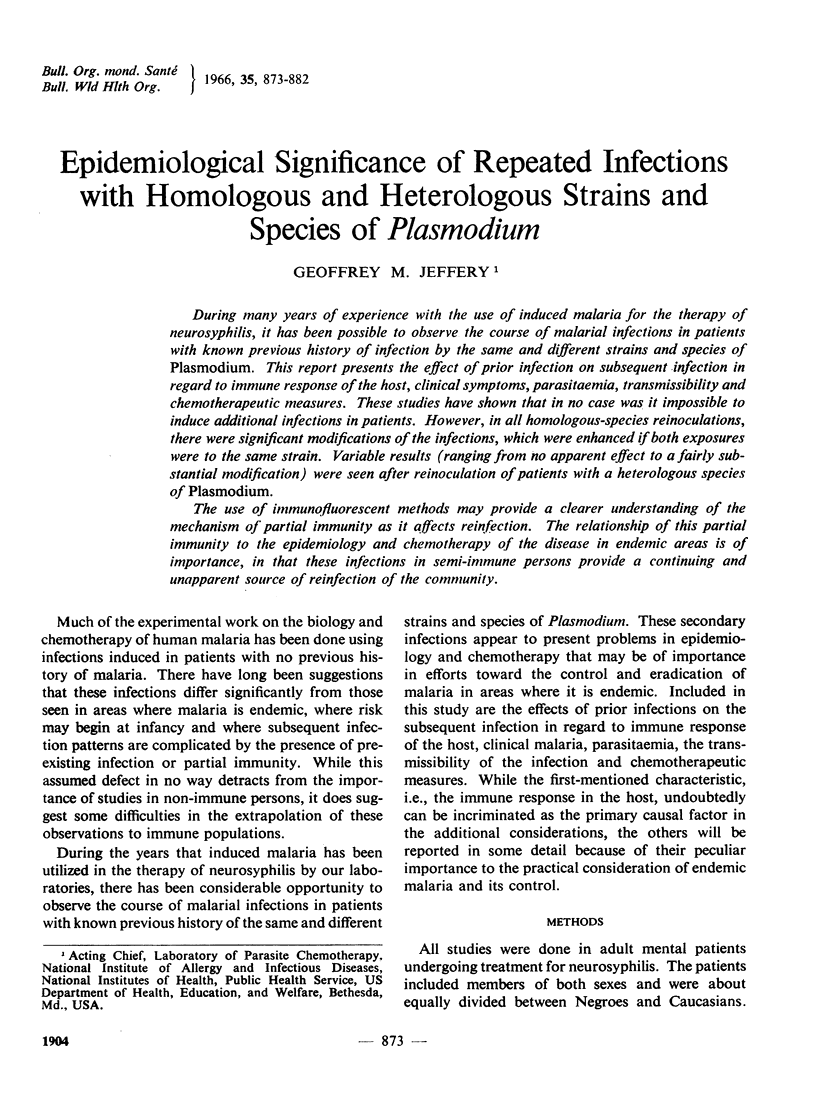
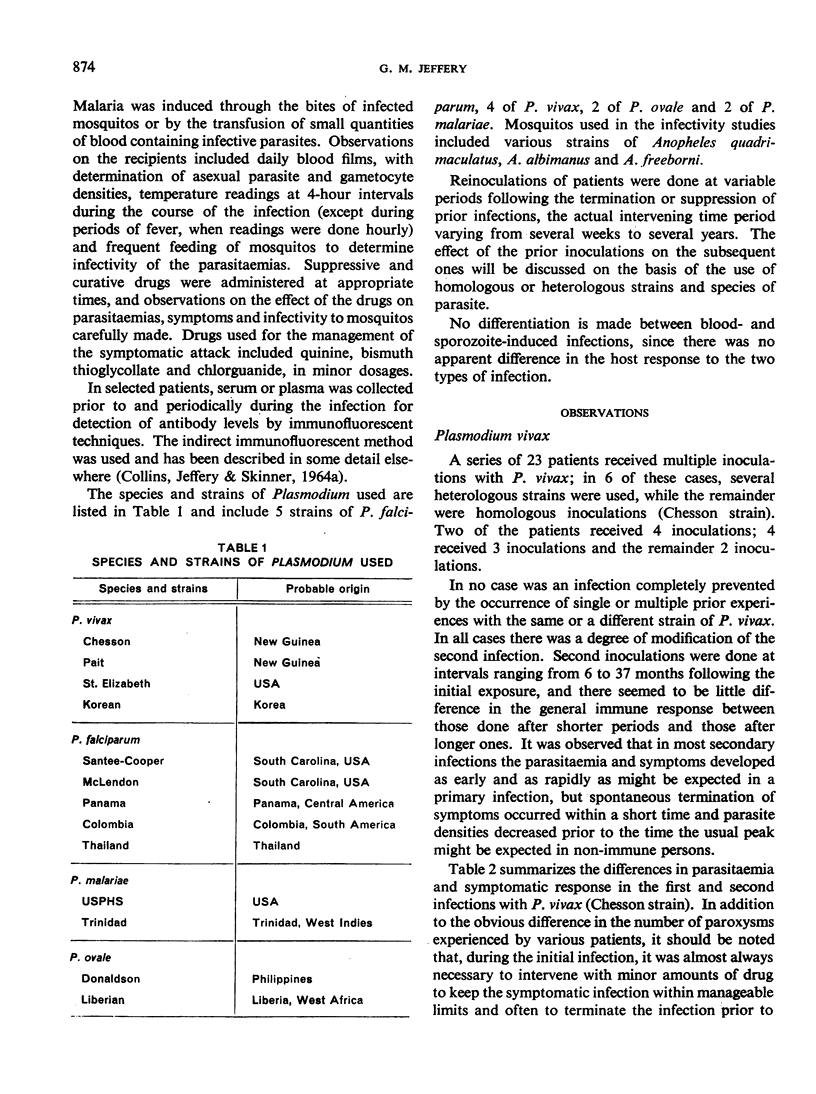
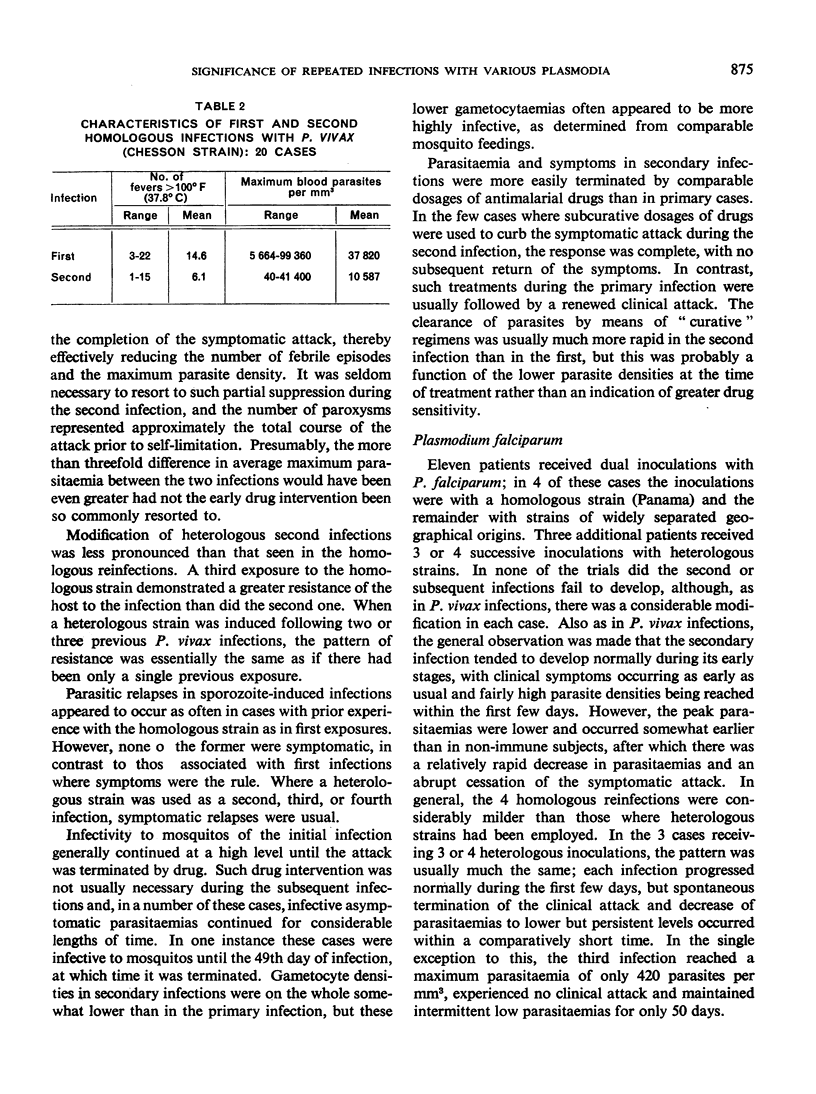
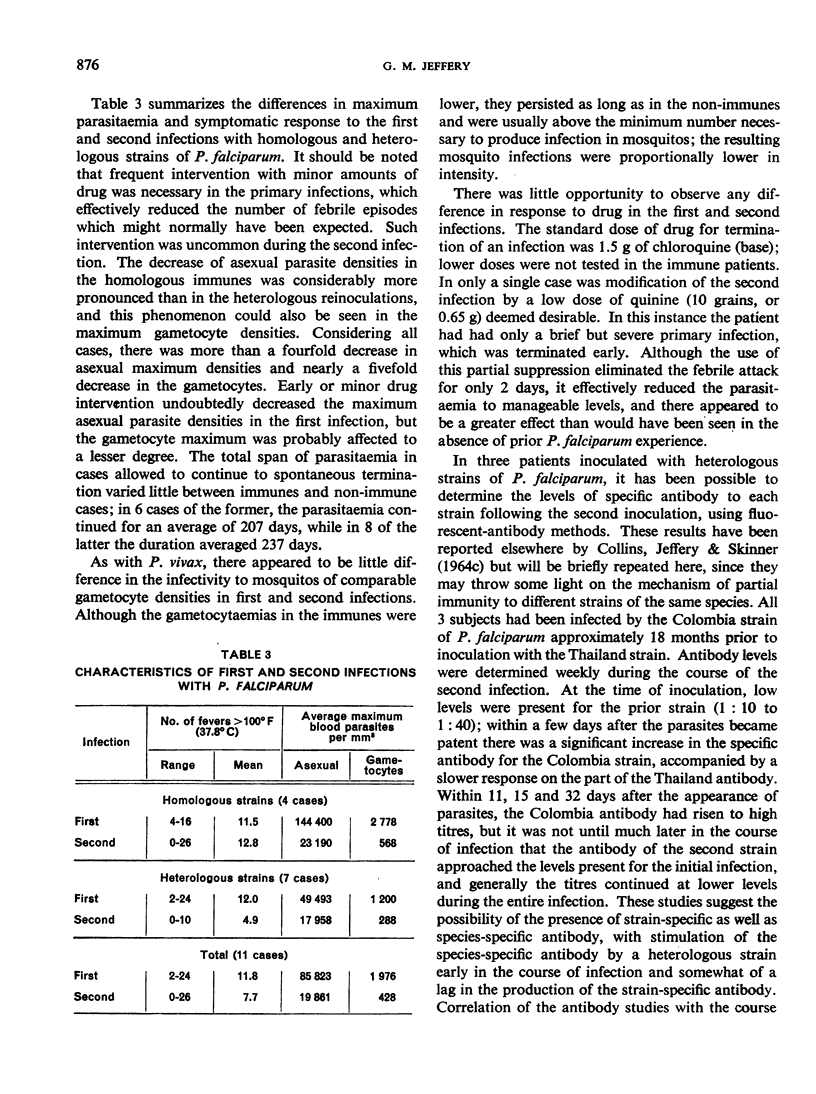
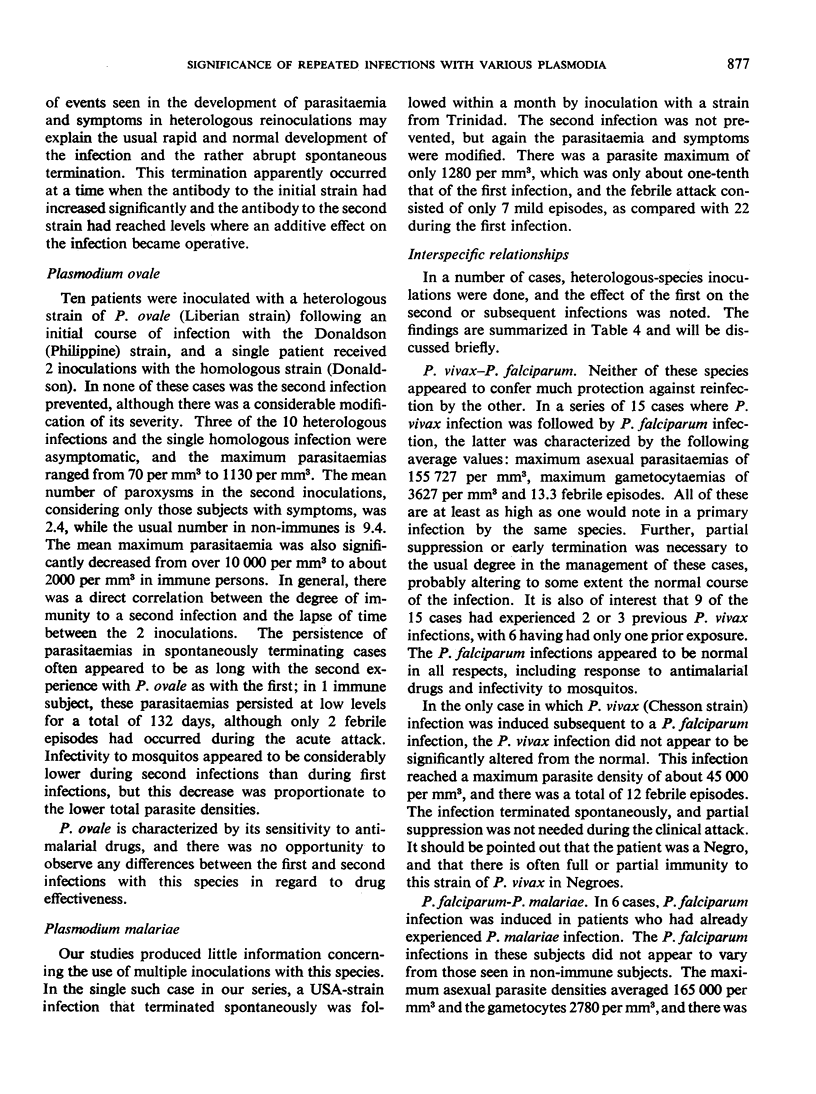
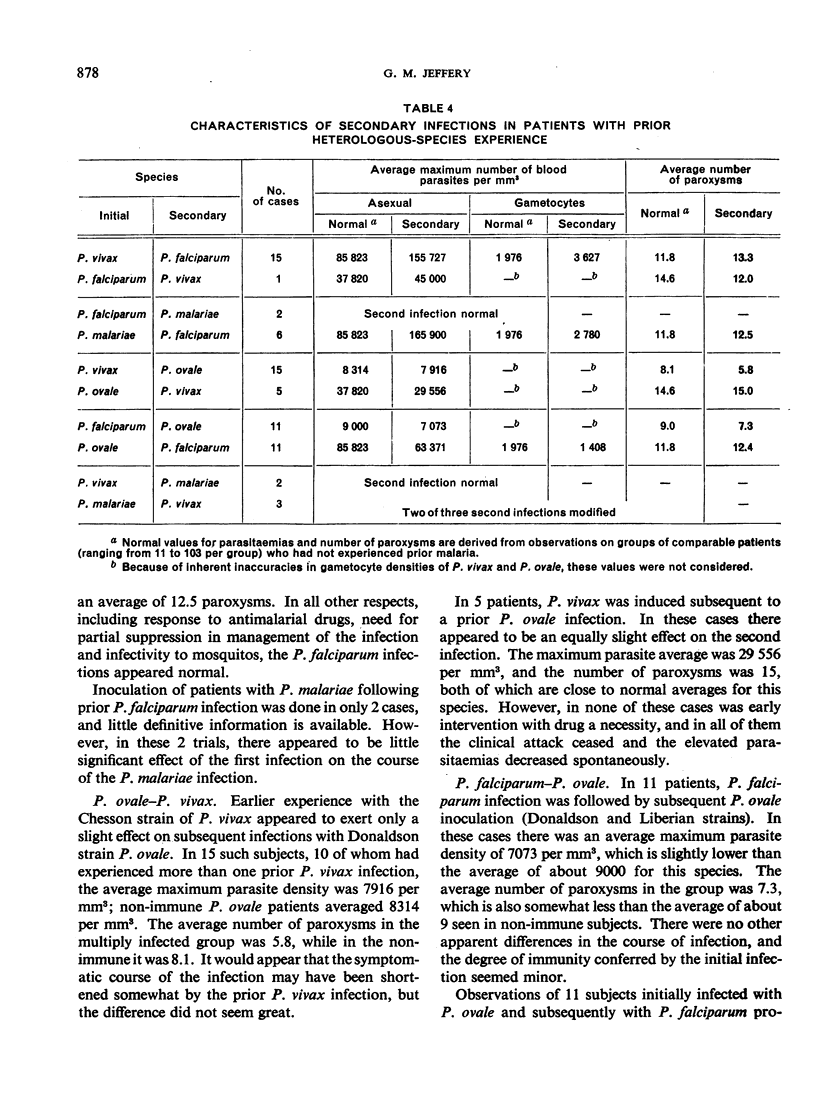
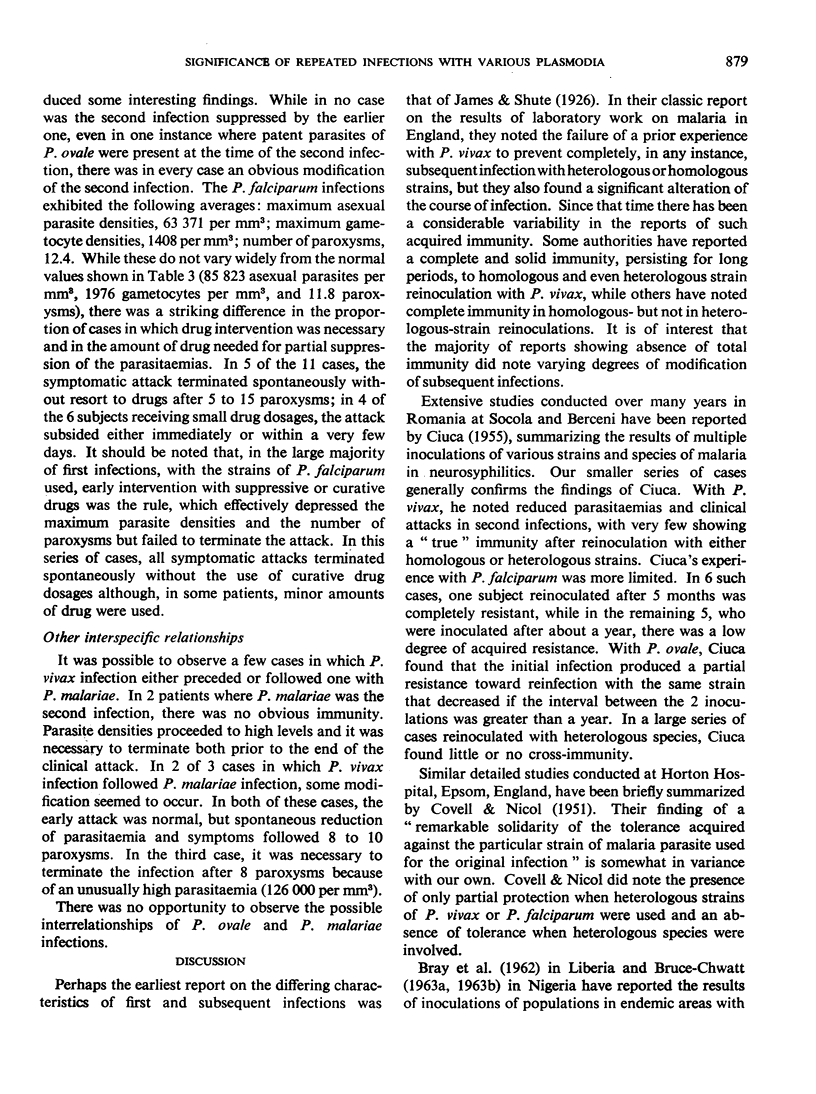
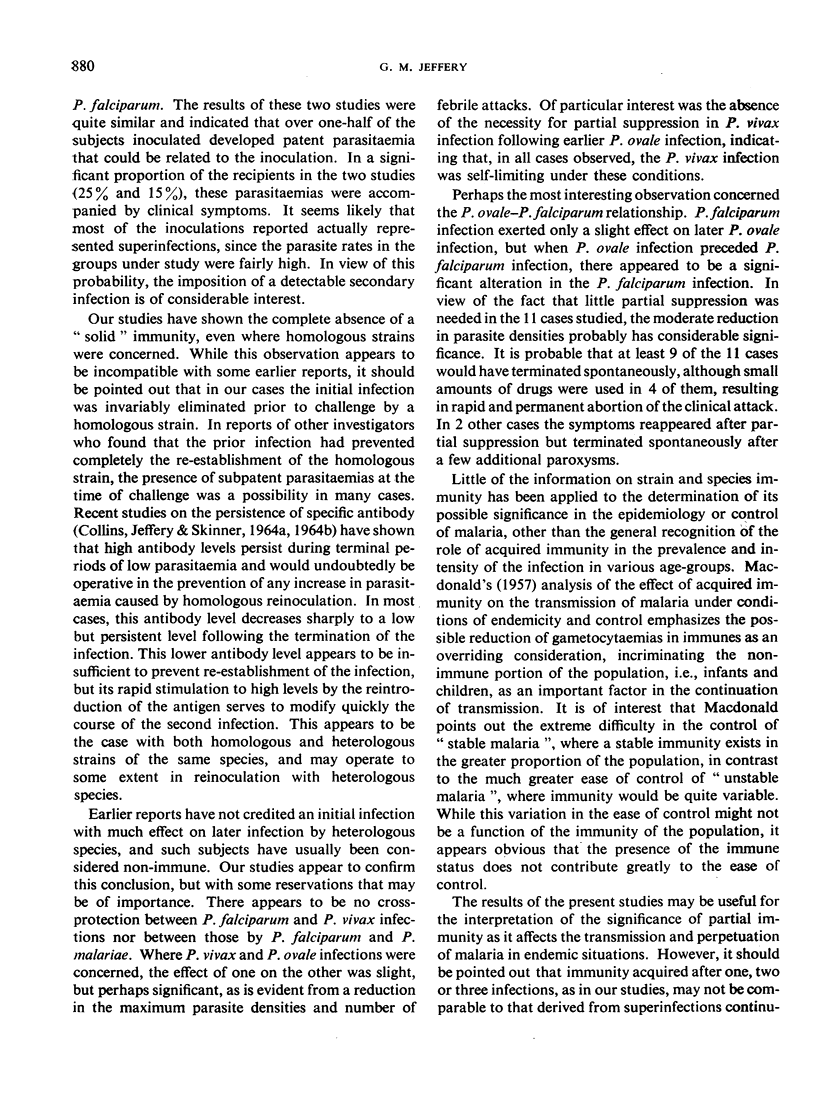
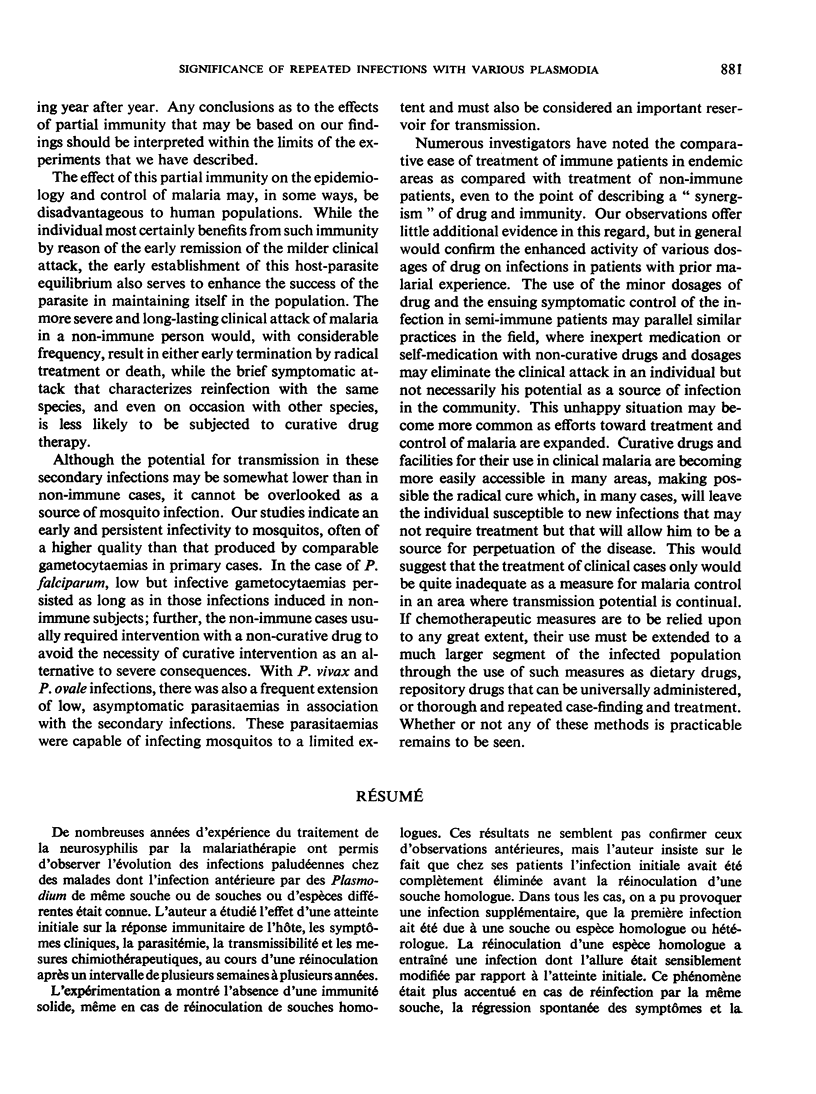
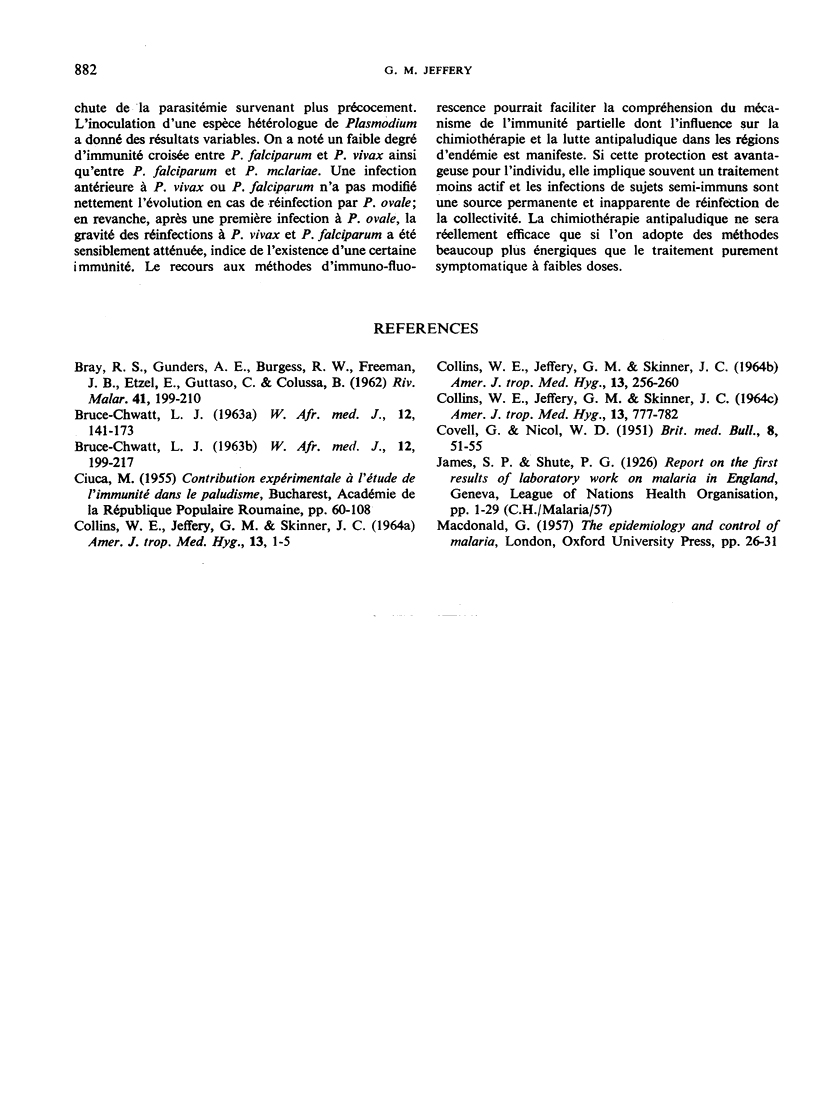
Selected References
These references are in PubMed. This may not be the complete list of references from this article.
- BRAY R. S., GUNDERS A. E., BURGESS R. W., FREEMAN J. B., ETZEL E., GUTTUSO C., COLUSSA B. The inoculation of semi-immune Africans with sporozoites of Laverania falcipara (Plasmodium falciparum) in Liberia. Riv Malariol. 1962 Dec;41:199–210. [PubMed] [Google Scholar]
- BRUCE-CHWATT L. J. A LONGITUDINAL LONGITUDINAL SURVEY OF NATURAL MALARIA INFECTION IN A GROUP OF WEST AFRICAN ADULTS. I. West Afr Med J. 1963 Aug;12:141–173. [PubMed] [Google Scholar]
- BRUCE-CHWATT L. J. A LONGITUDINAL SURVEY OF NATURAL MALARIA INFECTION IN A GROUP OF WEST AFRICAN ADULTS. West Afr Med J. 1963 Oct;12:199–217. [PubMed] [Google Scholar]
- COLLINS W. E., JEFFERY G. M., SKINNER J. C. FLUORESCENT ANTIBODY STUDIES IN HUMAN MALARIA. 3. DEVELOPMENT OF ANTIBODIES TO PLASMODIUM FALCIPARUM IN SEMI-IMMUNE PATIENTS. Am J Trop Med Hyg. 1964 Nov;13:777–782. doi: 10.4269/ajtmh.1964.13.777. [DOI] [PubMed] [Google Scholar]
- COLLINS W. E., JEFFERY G. M., SKINNER J. C. FLUORESCENT ANTIBODY STUDIES IN HUMAN MALARIA. II. DEVELOPMENT AND PERSISTENCE OF ANTIBODIES TO PLASMODIUM FALCIPARUM. Am J Trop Med Hyg. 1964 Mar;13:256–260. doi: 10.4269/ajtmh.1964.13.256. [DOI] [PubMed] [Google Scholar]
- COLLINS W. E., JEFFERY G. M., SKINNER J. C. FLUORESCENT ANTIBODY STUDIES IN HUMAN MALARIA.I. DEVELOPMENT OF ANTIBODIES TO PLASMODIUM MALARIAE. Am J Trop Med Hyg. 1964 Jan;13:1–5. doi: 10.4269/ajtmh.1964.13.1. [DOI] [PubMed] [Google Scholar]
- COVELL G., NICOL W. D. Clinical, chemotherapeutic and immunological studies on induced malaria. Br Med Bull. 1951;8(1):51–55. doi: 10.1093/oxfordjournals.bmb.a074054. [DOI] [PubMed] [Google Scholar]


